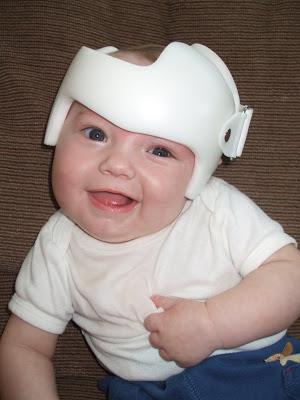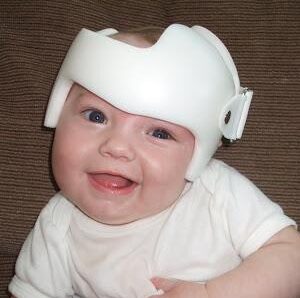 Torticollis, literally translating to ‘wry neck,’ is a condition in which a child’s neck is typically flexed or bent in one direction and rotated in the other direction. This is due to a muscle in the neck, called the sternocleidomastoid, which has become shortened, strained, or weakened. This results in an abnormal posture of the head and neck.
Torticollis, literally translating to ‘wry neck,’ is a condition in which a child’s neck is typically flexed or bent in one direction and rotated in the other direction. This is due to a muscle in the neck, called the sternocleidomastoid, which has become shortened, strained, or weakened. This results in an abnormal posture of the head and neck.
The following conditions may lead to torticollis:
- A crowded womb (first born children or multiple children born at once)
- A longer birthing process
- A child frequently placed in the same position
- A child placed in a position where all of the toys or people they interact with are on one side of their body
- A child placed in a device such as a car seat, rocker, or swing that is not the appropriate size and reinforces a poor posture of their head or neck and leads to low muscle tone or strength throughout their body
Torticollis can then lead to plagiocephaly, a flattening of the skull, as the infant’s head only has pressure on one side due to this poor posture. A child will then typically require use of a DOC band (helmet) in order to help the resulting flatness of their skull while they are also receiving physical or occupational therapy.
Although many healthcare providers are well trained on torticollis, we often receive referrals after the ideal time frame of 1-3 months of age. Several months may not seem like a significant amount of time to wait, but for torticollis, early intervention is critical for their flexibility, strength and gross motor skills to prevent additional associated abnormalities or difficulties.
Additional health problems that may develop due to a late referral for torticollis include:
- Scoliosis (curvature of the spine)
- Facial asymmetries
- TMJ pain (joint in jaw that opens and closes the jaw)
- Development of an under bite
- Inability to integrate reflexes (making activities that require use of multiple limbs at once difficult
- A preference to only use one side of the body
- Contracture formation (muscles shorten so much that you cannot move them in their natural range)
- Nerve or blood vessel damage
- Development of asymmetrical or atypical motor planning for skills such as crawling or walking, and pain in their neck or back.
Any of these conditions may eventually require a surgical intervention. The longer a child is left untreated, or when there is limited follow through with stretching, positioning or exercising at home, the more likely a child will develop any associated symptom listed above. Therefore, it is crucial for these infants to be referred to therapy as soon as possible. If not immediately recommended by the pediatrician, parents should request this when they schedule their child’s doctor’s appointment.
Research has consistently shown that the earlier a child is treated for torticollis, the fewer treatments are needed and the sooner a child is able to return to ‘normal’ position of their head and neck. For example, they achieve full mobility of their neck within one and half months if referred by one month of age compared to nine or ten months of rehabilitation if they are not recommended until six months of age.
Research has also shown that children who receive skilled physical therapy sessions make progress three times as quickly as children who are only stretched at home. When a child is younger, they are better able to tolerate positions that create a stretch or are able to be held in a stretch position for longer because they do not have the skills to crawl/walk/run away nor the strength to push out of a position. Once a child is in a stage of increased independence and mobility, usually after six months, it is much harder for a child to tolerate therapy for torticollis.
It is best to start treatment for these children as soon as possible with more frequent visits, along with stretching and exercises performed at every diaper change to promote improved positioning of the neck. This will help avoid further associated implications or potential surgical intervention.
If you have any questions, please do not hesitate to contact Kids Place!







